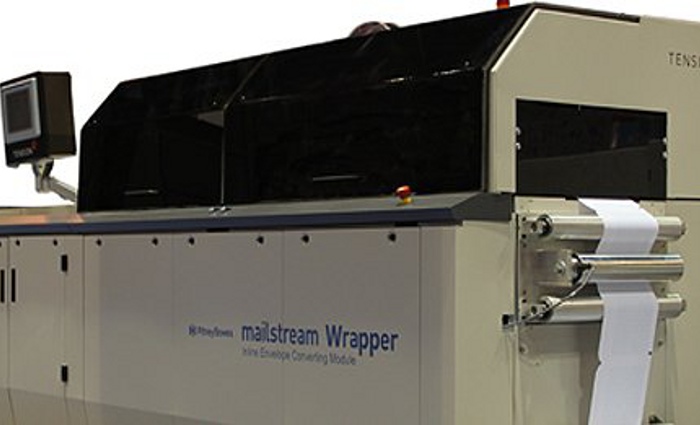
The Mailstream Wrapper, first launched at Drupa, is now "full blown, well developed and ready to market", said the European director of marketing for Document Messaging Technologies (DMT), Ronald van Hees.
The modified wrapper now comes with the in-line envelope converting module, which enables fulfilment and mailing providers to the transactional market to create scalloped flaps and windows to distinguish the mail pieces from regular direct mail, which van Hees said has a low opening rate.
Hees added: "In the last 20 years direct mail companies have been using wrapped envelopes without a scalloped flap. The opening rate of these envelopes is very small and they are never accepted by the banks or insurance companies. Now we are able to use a wrapper system for the transactional market.
"We are able to produce these envelopes as if it was a conventional envelope. Even the document owners will not understand the difference between conventional or wrapped envelopes, which means that services bureaus are more able to cost-effectively swap production from A to B.
[Related: Pitney Bowes moves into big data marketing]
"They do not have to swap materials or store envelopes anymore; they can create the envelopes from plain paper."
Users can pre-print the envelope roll to put through the diecut module within the envelope converter to create the scalloped flap and windows. The reel continues through the Mailstream Wrapper to be folded around the reel of mail documents, then sealed and cut to length.
Van Hees said it offered users the opportunity to combine direct mail and transactional mail by printing marketing messages on the envelope roll.
He added that the cost of the Mailstream Wrapper would be one step above Pitney Bowes’ top level inserters and said that its use of paper reels makes fulfilment cheaper for customers than if they were using stocks of envelopes.
While the Mailstream Wrapper is still offered without the envelope converter, customers were not as keen on the machine without the new features, according to van Hees. The envelope converter can be turned off to create regular envelopes.
Van Hees said: "The whole project was based on transactional mail and we wanted to create a unit that is within our market space, as we have an 80-90% share of the global transactional market."
This article originally appeared at printweek.com
Comment below to have your say on this story.
If you have a news story or tip-off, get in touch at editorial@sprinter.com.au.
Sign up to the Sprinter newsletter
